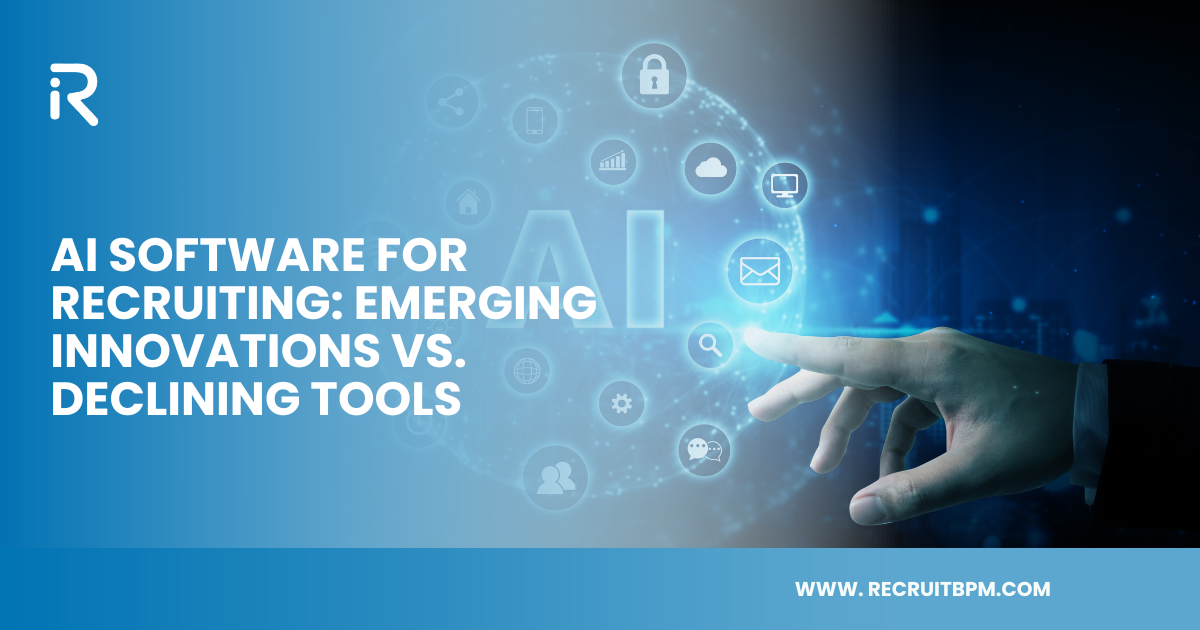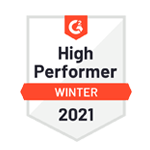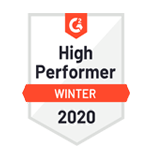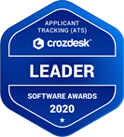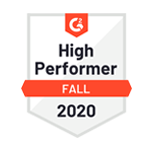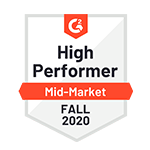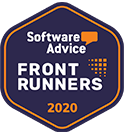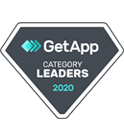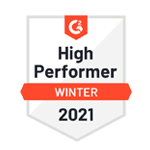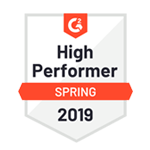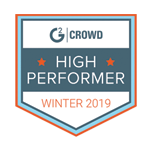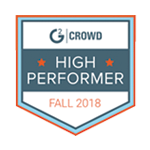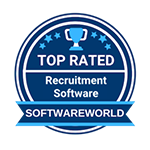The hunt for top talent isn’t what it used to be – AI software for recruiting has taken center stage, rewriting the rules for HR teams everywhere. Forget sifting through stacks of resumes; today’s platforms promise smarter sourcing, unconscious bias checks, and predictive analytics that feel almost clairvoyant. Yet, not every tool lives up to the hype. Some platforms dazzle with automation and candidate matching, while others drown users in complexity or deliver generic results. In the B2B SaaS world, knowing what’s hot – and what’s absolutely not – can mean the difference between building a winning team or missing the mark.
The Evolution of AI in Recruiting: Why It Matters Now
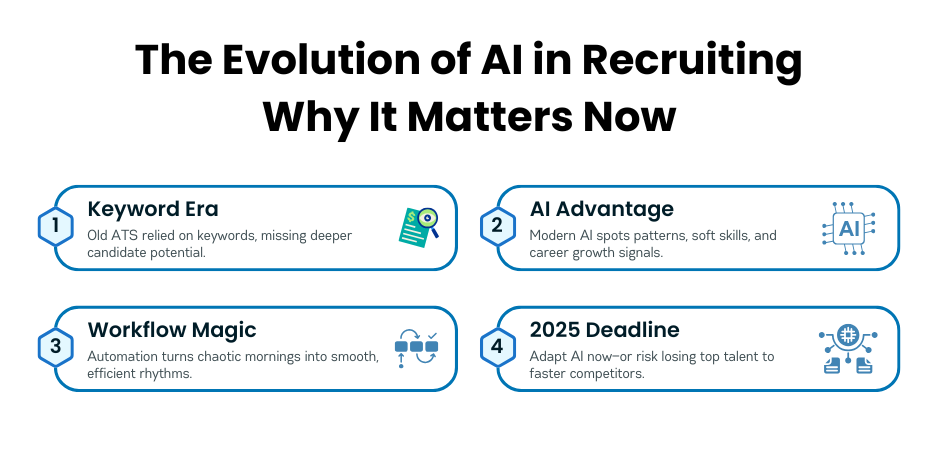
The old way? It was all about keywords—the right phrase, bolded or buried, could make or break a candidate’s shot. Some called it efficient. Most called it luck. Recruiters played detective, sifting through mountains of sameness, hoping to spot a glimmer of fit amid a sea of “results-oriented team players.” The process was grueling, often arbitrary. Talent slipped through the cracks.
Now, AI software for recruiting has dragged hiring into a new era – and not a moment too soon. Forget keyword bingo. Today’s platforms lean on predictive analytics, connecting dots that once went unnoticed. A candidate with a zigzag path—hospitality to fintech, then a leap into ops—might have been tossed aside before. Now, AI spots the pattern: adaptability, upward momentum, appetite for risk. It’s not just what’s listed, but how careers evolve, where gaps signal growth, and which soft skills emerge from the narrative’s edges.
Workflow automation? That’s the unsung shift. Think of it as invisible scaffolding: interview scheduling that runs itself, reminders that don’t slip through the cracks, status updates delivered before the question’s even asked. One recruiter joked that with automation, Monday mornings felt less like triage and more like music. Not a symphony, maybe – more like jazz. Improvised, but somehow, it works.
There’s a stubborn myth: that AI pushes humanity out of hiring. The evidence says otherwise. A study in recent year found that recruiters using advanced AI spent 22% more time on actual conversations, not less. Turns out, when the grunt work disappears, people connect deeper. The irony isn’t lost on anyone paying attention.
Enter RecruitBPM. It doesn’t just bolt AI onto old workflows—it rethinks the whole experience. Suddenly, small teams can move like giants. Candidates, especially the ones juggling multiple offers, notice the difference: a process that feels responsive, almost anticipatory. In this market, that’s not just nice to have—it’s the edge.
Why does it matter now? Because the talent race has gone full throttle. The winners aren’t just those who find the needle—they’re the ones who build better magnets. Most still think recruiting is about filling seats. But the real game? Building teams that last. For that, AI isn’t a shortcut. It’s the new foundation.
The Old ATS vs New AI Recruiting Platforms
Legacy ATS tools promised order—what they delivered often felt like digital paperwork. Sifting stacks of resumes became a test of patience, not potential. These systems are filtered by keywords, missing top talent that didn’t play by the algorithm’s rules. Most assume the old guard still works, but recent surveys show 68% of talent leaders now view traditional ATS as a bottleneck, not a bridge.
Enter recruiting AI software. Suddenly, screening isn’t about matching buzzwords—it’s about real skills and hidden gems. One fintech company watched its time-to-hire drop by 40% after switching to AI-powered screening; the software learned from outcomes, not assumptions. The difference? AI platforms spot patterns, surface soft skills, and even flag unconscious bias. The old ATS felt static—like searching for a needle with a flashlight. AI platforms hand you a magnet. It’s not just faster. It’s smarter.
Why 2025 Is the Tipping Point
Talent acquisition’s landscape isn’t just shifting—it’s being jolted. The year 2025 stands out, not for vague predictions, but because converging trends refuse to wait. Economic uncertainty, labor shortages, and remote work have all piled on, but it’s AI software for recruiting that’s rewriting the playbook. Most assume AI recruiting platforms are “nice-to-haves.” The latest data disagrees. A 2024 survey shows 68% of hiring teams now use AI to screen, assess, and even schedule interviews.
That’s not hype—it’s survival. The platforms’ ability to surface hidden talent and cut time-to-hire feels like switching from dial-up to fiber optic in a single leap. Ignore it, and competitors will snap up the best people before you even draft a job post. The real question isn’t if you’ll adapt, but whether you’ll keep pace—or spend 2025 playing catch-up.
What Makes a Top AI Recruiting Software?

There’s recruiting software, and then there’s recruiting AI software that actually earns the “top” label. The difference? It’s not a bullet-point checklist—it’s the feeling that the platform’s doing heavy lifting you didn’t realize you could delegate.
Automation sets the baseline. The best platforms don’t just fire off templated emails—they shave hours off the clock by sifting resumes, nudging candidates, and flagging bottlenecks before anyone hits “refresh.” One finance firm swapped out their legacy system for an AI-driven platform and cut candidate response lags by 60%. It felt, by all accounts, like swapping out a tricycle for a Tesla.
Then there’s machine learning. Most people assume it’s just smarter keyword matching. Not quite. Top recruiting AI software watches historical hiring data, learns from what worked (and what flopped), and gets sharper at predicting which applicants will not only stick but thrive. Imagine a recruiter with 10,000 interviews under their belt—now imagine that knowledge distilled into an algorithm that never forgets.
CRM integration? Non-negotiable for any organization that wants full visibility. When candidate interactions, hiring manager notes, and pipeline status all live in one place, nobody’s left guessing who dropped the ball. The experience becomes seamless—like following a GPS instead of a hand-drawn map.
The real differentiator is candidate matching. It’s not just about parsing skills. The best systems score for cultural fit, growth potential, even “soft skills” (as much as algorithms can intuit those). A tech startup recently flipped their hiring funnel upside down using AI-based matching—suddenly, retention numbers climbed and onboarding time shrank. Coincidence? The data says otherwise.
Analytics often get shoehorned in as a dashboard afterthought. Top AI recruiting software weaves analytics into every step. Need to know if your candidate pool’s drying up? Or why certain roles take three times longer to fill? The answers aren’t buried—they’re blinking in the corner, waiting for action.
Don’t forget collaboration tools. Recruitment’s a team sport, not a solo sprint. The best platforms make it effortless for hiring managers, HR, and interviewers to weigh in—sometimes asynchronously, sometimes all at once. Think Google Docs for talent decisions, minus the version control headaches.
Most assume a slick UI or a long feature list signals top-tier recruiting AI software. The reality: it’s about orchestration. Automation that feels invisible, intelligence that quietly adapts, and tools that make teams faster and smarter—without adding noise. In a talent market where speed wins, that’s the difference between hiring rainmakers and missing the storm entirely.
Must-Have Features Checklist
Sifting through vendors for the best AI software for recruiting can feel like speed-dating with robots—everyone claims they’re “the one,” but only a handful actually click. Here’s what seasoned recruiters don’t compromise on:
- Easy-to-Navigate Dashboards: If your team can’t find the “search” bar without a map, move on. The best platforms feel instinctive, not like deciphering a tax form.
- Seamless Integration: Sure, standalone tools are cute. But if they don’t play nice with your ATS or Slack, expect chaos (and a lot of copy-pasting).
- Smart Candidate Matching: Forget keyword bingo. Top-tier software uses real intelligence—learning as it goes, surfacing surprising gems you might’ve missed.
- Transparent Analytics: Real-time reporting isn’t a luxury anymore. You want clear visualizations, not cryptic spreadsheets, to spot bottlenecks or hidden stars.
- Flexible Pricing (or Free Trials): “AI software for recruiting free” isn’t a myth. Vendors offering no-cost pilots show confidence—plus, you get proof before the pitch deck.
Most teams just tick boxes. The best ones use this list to weed out the smoke and mirrors—because smart hiring starts long before the first interview.
Hidden Features That Save Time & Money
Most teams focus on flashy dashboards or reporting tools—but the real ROI often hides in plain sight. Customizable workflows, for instance, let recruiters tailor every stage of the hiring process. No more generic templates or manual workarounds. Instead, drag-and-drop logic aligns the CRM with how your team actually works.
Then there’s pipeline automation. It’s not just about sending follow-up emails—it’s about setting rules that trigger actions based on candidate behavior, recruiter input, or status changes. One agency cut admin time by 30% simply by automating status updates and interview scheduling.
These tools are baked into top-tier AI recruiting CRM software, but they’re often overlooked during implementation. That’s the catch: the features are there, but they need intention to unlock their full value. Treat them as strategy tools—not just tech perks—and they’ll quietly save you hours and thousands in overhead.
RecruitBPM vs the Competition: A Feature-Level Breakdown
Choosing AI software for recruiting isn’t just about who has the flashiest UI or the longest feature list. It’s about what works—consistently, quietly, and without draining your time or budget. RecruitBPM doesn’t try to be everything. It focuses on what matters: automation that saves hours, pricing that scales, and integrations that don’t break.
Take automation. Most platforms—RecruitCRM, Crelate, Bullhorn—offer workflow tools. But often, they’re rigid. Pre-built templates that force your team into someone else’s process. RecruitBPM flips that. You build logic around your pipeline, not the other way around. A staffing firm recently shaved off two admin hours per recruiter per week by letting the system auto-advance candidates, ping clients, and log touchpoints. No extra clicks. No Zapier gymnastics.
Integrations? Bullhorn has depth, but it comes at a price—usually a consultant. Recruiterflow talks to Slack and Gmail, but stumbles with job boards and assessment tools. RecruitBPM connects the whole ecosystem: email, ATS, background checks, scheduling—out of the box.
Now, pricing. Here’s where it gets real. Bullhorn’s fees climb fast. Crelate hides key features behind higher tiers. RecruitBPM keeps it straight. Transparent tiers, no nickel-and-diming for automation or reporting.
It’s not the loudest tool in the room—but in the race for top AI recruiting software, it’s often the one that keeps moving while others stall.
Comparative Table: Features, Support, & Value
When it comes to choosing the best AI recruiting software, seeing the details side-by-side cuts through the noise. Feature lists and sales demos don’t always reveal the fine print—this does. Below is a distilled comparison of five leading recruiting ATS software options, focused on the areas that impact daily performance: automation, integration, support, and long-term value.
| Platform | Automation | Integrations | Customer Support | Pricing Transparency | Best For |
| RecruitBPM | Highly customizable workflows, triggers | Built-in tools + job boards, CRMs | Live chat, email, 1:1 onboarding | Clear, tiered pricing | Growing firms needing flexibility |
| Bullhorn | Strong, but enterprise-focused | Deep ecosystem, steep setup curve | Tiered support, extra cost | Opaque, scales quickly | Large agencies with complex needs |
| RecruitCRM | Basic automations | Limited, solid with LinkedIn | Responsive, no-frills | Moderate, may limit scaling | Small firms with lean processes |
| Crelate | Decent workflows, moderate flexibility | Expansive, sometimes requires workarounds | Knowledge base heavy | Hidden costs at higher tiers | Hybrid teams needing niche tools |
| Recruiterflow | Workflow templates, fewer custom rules | Smooth email & calendar sync | Standard chat & ticket support | Simple, but features locked in tiers | Startups needing fast implementation |
No software wins on every front—but if adaptability, ease-of-use, and long-term value top your list, RecruitBPM punches above its weight.
When to Choose RecruitBPM Over Others
Not every team needs the same playbook. The right AI recruiting CRM software depends on your workflow, size, and how fast you need to move. RecruitBPM isn’t for everyone—but for the right users, it’s a clear win.
Small to mid-sized businesses (SMBs) juggling multiple roles will appreciate how RecruitBPM streamlines hiring without demanding a full-time admin. It’s lean, intuitive, and doesn’t nickel-and-dime for core features.
Staffing firms—especially those scaling—benefit from its flexible automation. Recruiters can automate touchpoints, track pipeline shifts, and handle high-volume placements without losing personal touch.
In-house recruiting teams often face scattered tools and siloed data. RecruitBPM brings everything—candidates, communication, reporting—into one place. Less toggling. More hiring.
While enterprise systems chase complexity, RecruitBPM focuses on clarity. If you’re looking for power without the overhead, this is where it fits. Think fewer workarounds, more momentum.
Measuring ROI of AI Recruiting Tools
Most vendors talk about value—but few actually measure it. Real ROI doesn’t come from flashy dashboards or promises of “AI efficiency.” It shows up in metrics that matter: time-to-fill, cost-per-hire, source effectiveness, and recruiter productivity. And the right AI software for recruiting doesn’t just help track those numbers—it improves them.
Start with time-to-fill. AI recruiting tools that automate screening, interview scheduling, and follow-ups can cut days—or even weeks—off the hiring cycle. One firm using intelligent pipeline triggers saw average time-to-fill drop by 27%, simply by eliminating lag between candidate stages.
Then there’s cost-per-hire. Most tools overlook how expensive manual tasks really are. Logging notes. Chasing feedback. Sorting resumes. When recruiting AI software steps in, those hours shrink. And hours saved? They’re budget saved. Not just in payroll—but in opportunity cost from slow hiring.
Source effectiveness is another blind spot. Good AI doesn’t just track where candidates come from—it learns which sources deliver quality over quantity. Recruiters can double down on what works, and cut spending on what doesn’t. It’s not magic—it’s math backed by machine learning.
Last but not least, recruiter productivity. This isn’t about replacing people. It’s about freeing them up. When AI handles the rinse-and-repeat tasks, recruiters spend more time closing, less time chasing. One agency reported a 35% increase in placements per recruiter after switching to AI-powered workflows.
ROI isn’t a footnote. It’s the scoreboard. And the best recruiting AI software doesn’t just play the game—it helps you win it, repeatedly.
Built-In Reporting vs Add-On Analytics
Most AI recruiting platforms claim to offer “advanced analytics,” but dig deeper and you’ll find a patchwork of third-party tools stitched together post-purchase. That’s where things get messy—laggy dashboards, broken filters, or worse, extra fees just to access your own data.
RecruitBPM takes a different route: native, built-in reporting baked directly into the platform. No integrations, no exports, no waiting. Metrics like time-to-fill, source quality, and recruiter efficiency are tracked in real time—right alongside your workflows.
That integration matters. When analytics live inside the CRM, they’re actionable. Want to see how one recruiter stacks up across client accounts? Two clicks. Curious which job boards actually deliver hires—not just traffic? It’s already filtered.
Add-on tools promise insight. Native tools deliver clarity. And when speed and precision drive placements, that’s not a luxury—it’s a competitive edge.
Sample ROI Calculation Using RecruitBPM
Crunching ROI on AI software for recruiting often feels like chasing shadows—numbers floating without context.
Here’s a clearer lens.
Picture a staffing firm with 10 recruiters. Each wastes roughly 8 hours a week on repetitive tasks: scheduling calls, chasing candidates, updating records. RecruitBPM swoops in and trims that by 30%. Suddenly, 2.4 hours per recruiter become free every week—that’s like hiring an extra half-person without payroll headaches.
Now, multiply those saved hours by an average $40 hourly cost, and the firm nets nearly $1,000 weekly. Not trivial.
Faster hires follow. Shaving even 4 days off time-to-fill means less empty desks and happier clients—vacancy costs aren’t just numbers, they’re tangible losses felt every day.
Lastly, ditching add-on tools—thanks to RecruitBPM’s built-in features—slashes software by hundreds monthly.
Add it all up over 12 months: the tool pays for itself and then some. ROI isn’t just math here. It’s momentum—quiet but undeniable.
The Migration Journey – Moving to an AI Recruiting CRM
Most blogs treat migration like an afterthought—as if switching from spreadsheets to an AI recruiting CRM is a simple copy-paste. Spoiler: it’s not. It’s more like moving into a new house—you don’t just dump boxes at the door and call it a day.
Step one: audit your mess. Spreadsheets often look neat until you find duplicates lurking like landmines, fields filled inconsistently, and info scattered in all directions. Cleaning this up isn’t glamorous. But it’s the difference between smooth sailing and chaos. Think of it like clearing your closets before a move—fewer boxes, fewer headaches.
Next, map your existing hiring workflow to RecruitBPM’s flexible pipeline. This isn’t about shoehorning your process into the software’s defaults. It’s about customizing workflows so your team’s habits—and quirks—feel supported, not stifled. The platform’s AI automation can handle follow-ups, candidate scoring, and more—but only if you give it the right blueprint.
Then comes data import—test first. Dumping your whole database in one go is a rookie move. Import small chunks, check that every email, note, and candidate status migrated correctly. It’s tedious, yes. But catching problems early saves hours of heartburn.
Training? Forget one-off tutorials. Teams need hands-on sessions focused on daily wins: automating reminders, managing pipelines, and pulling reports. The best AI recruiting CRM isn’t just about tech—it’s about helping people breathe easier on tough days.
In addition to that run RecruitBPM alongside old tools for a bit. Let people adjust. Don’t yank away the familiar too fast.
Migration’s a journey. Not instant, not effortless—but with planning, it’s a leap that pays off every day after.
Change Management Tips for Your Team
Rolling out new recruiting AI software can feel like asking your team to learn a new language—while juggling their regular workload. The trick? Getting buy-in before the first demo.
Start small. Bring stakeholders in early—not with a sales pitch but with questions: “What slows you down?” “Where’s the friction?” People push back less when they see their pain points reflected, not dismissed. It’s like being handed a tool that’s built for your hands—not just anyone’s.
Training isn’t a one-time checkbox. Think of it more like a playlist of quick, focused sessions—bite-sized enough to digest between meetings. Peer-led workshops help too—people listen better when it’s coming from someone who’s been in the trenches, not a slide deck.
Expect some bumps. No migration is flawless. Running the new software alongside old systems creates a safety net—like training wheels on a bike. Celebrate the small wins loudly, too. When automation cuts tedious tasks, make sure the team hears about it. Nothing says “this works” like saved hours and fewer headaches.
Change isn’t instant. It’s messy, awkward, and sometimes frustrating. But with patience and steady communication, skepticism gives way to momentum. Soon enough, your team isn’t just coping—they’re leading the charge.
Avoiding Common Implementation Pitfalls
Picking the right recruiting software isn’t the finish line. It’s just the start of a tricky race—and many trips over the same invisible hurdles. The biggest? Thinking data migration is just a quick copy-paste. It’s more like moving an entire filing cabinet—crammed with mismatched folders and half-forgotten notes. Dumping messy spreadsheets triggers chaos: duplicates hide like shadows, fields go missing, and suddenly your system’s working against you, not for you.
Then there’s the human factor. Teams aren’t machines; they resist change—especially when tossed into new software without a roadmap. Half-baked training or dry manuals? Recipe for frustration. Instead, focus on real-life scenarios, hands-on practice, and patience. Change isn’t a flick of a switch—it’s a slow burn.
Skipping pilot runs? Risky. Trying to swim in the deep end without testing waters first leads to costly mistakes. Small-scale tests catch problems before they snowball.
In a nutshell, ditch the “all-at-once” mentality. Running old and new systems side-by-side feels like training wheels but keeps the bike upright. Pulling the plug too soon? That’s the kind of crash no recruiter wants.
Avoid these pitfalls—your journey becomes less a minefield and more a clear path toward smarter, smoother recruiting.
Actionable Strategies to Maximize Your ATS Investment
Buying the best AI recruiting software is only half the battle—making it work for your team? That’s where many hit a wall. Too often, shiny tools sit idle, underused or misused. The trick isn’t just the software—it’s how you integrate it into daily hustle.
Start by ditching vague goals. “Improve recruiting” sounds nice, but it’s about specifics: cutting time-to-fill, boosting candidate engagement, or trimming cost-per-hire. These metrics aren’t just numbers—they’re your north star.
Customization is your secret weapon. One-size-fits-all pipelines? Forget it. Tailor workflows to fit your team’s natural rhythm. When the software feels like a custom suit—not a hand-me-down—it’s easier to wear all day.
Training shouldn’t overwhelm or bore. Break it into bite-sized, task-driven sessions. Short demos before recruiters tackle new features work better than sprawling manuals. Peer-led sessions? Even better. When a colleague shows how automation trims tedious follow-ups, the message sticks.
Clean data is the unsung hero. Dirty records spoil AI insights—duplicates and outdated info gum up decision-making. Regular clean-ups feel tedious, but they’re like oil changes: crucial for smooth operation.
Dashboards are more than pretty charts. They spotlight hidden blockages: stalled candidates, dead-end channels, uneven workloads. Use these insights to tweak—not punish—processes.
Lastly, keep communication alive. Invite feedback, celebrate small wins, and stay flexible. When recruiters own the tool, adoption isn’t a battle—it’s momentum.
Your ATS isn’t just software. It’s a partner. Treat it well, and it transforms recruiting from a grind into a competitive edge.
Workflow Automation Hacks
Automation in AI software for recruiting can feel like magic—until it’s set up wrong and causes more headaches than help. RecruitBPM’s automation tools offer quick wins that don’t require a PhD to unlock.
Start simple: automate routine follow-ups. Instead of hunting down every candidate manually, set triggers that send personalized messages at key stages. It saves hours that recruiters usually lose to busywork.
Next, leverage pipeline automation to move candidates seamlessly through hiring stages. No more manual updates or missed handoffs—think of it as an invisible assistant keeping everything on track.
Don’t forget task reminders. RecruitBPM can nudge your team when deadlines loom, ensuring nothing slips through cracks.
Most assume automation is complex, but RecruitBPM proves it doesn’t have to be. Set it once, and watch your team’s productivity soar—less grunt work, more strategic focus.
Hiring Manager Collaboration Tips
Getting hiring managers fully on board with AI software for recruiting can feel like herding cats—frustrating but totally doable with the right approach. The secret? Make their involvement effortless and clearly valuable.
Start by involving them early. When hiring managers see how the software streamlines candidate reviews or automates interview scheduling, resistance fades. Show, don’t just tell—demonstrations beat endless emails every time.
Keep communication simple. Avoid overwhelming them with dashboards; instead, send concise updates highlighting key actions or decisions. Time is their currency, so respect it.
Encourage real-time feedback within the platform. When hiring managers can comment directly on candidate profiles, it cuts endless back-and-forth emails and speeds decision-making.
Furthermore, frame the AI tool as a collaborator, not a replacement. It frees hiring managers from busywork, letting them focus on what matters—choosing the right candidate.
Done right, collaboration moves from a headache to a competitive advantage.
The Future of Recruiting AI Software: What’s Next?
Recruiting AI software is no longer just a tool—it’s evolving into a strategic partner that feels almost human. Picture conversational AI that chats like a colleague over coffee, not a bot stuck on script. It doesn’t just schedule interviews; it gauges mood, answers real questions, and even senses when a candidate might be a perfect culture fit. The technology’s about to get a lot more intuitive—and a lot less robotic.
Diversity hiring will move beyond ticking boxes. Predictive algorithms will quietly spotlight unconscious biases before they sway decisions, helping teams build genuinely inclusive workplaces. The data isn’t about policing but empowering smarter, fairer choices.
Then there’s hyper-personalization, where outreach feels crafted, not canned. Candidates will get messages tuned to their unique career journeys and motivations. Recruiting AI platforms won’t just automate—they’ll humanize at scale.
This future isn’t about replacing recruiters but freeing them. Machines will carry the grunt work, while humans focus on relationships, strategy, and intuition—the parts AI can’t touch. It’s a partnership where technology amplifies what makes recruiting truly human.
Conclusion: Choose Smarter, Hire Faster
Hiring isn’t a checklist. It’s a tightrope walk—balance speed with quality, insight with intuition. Most tools promise the moon but leave teams juggling half-baked automation and messy data. RecruitBPM breaks that cycle.
This isn’t just AI software for recruiting; it’s a finely tuned partner built to cut noise and amplify what matters. Imagine slashing tedious admin, spotting the right candidates faster, and actually having time to nurture relationships. Sounds like a dream? It’s what smart recruiters do every day with RecruitBPM.
Choosing the best AI software for recruiting means more than picking features—it’s about picking a system that feels alive, responsive, and made for your rhythm. Because when hiring windows shrink and stakes rise, every minute saved is a candidate gained.
So, why settle for good enough when you can hire smarter and faster? The future belongs to those who don’t just adapt—they accelerate.
Try RecruitBPM: Smarter Recruiting Starts Now
Why wait to upgrade your hiring game? With RecruitBPM’s AI recruiting CRM software, getting started is effortless—and yes, there’s a free demo to prove it. No tangled setups or endless training sessions. Just intuitive tools backed by responsive support that help your team hit the ground running.
RecruitBPM isn’t another tech headache; it’s a productivity boost that pays for itself fast. Ready to see how AI software for recruiting free can transform your process? The smartest hires start with a simple click.
FAQs
-
What’s the real cost behind AI recruiting software?
Costs aren’t always obvious. Some vendors lure you in with low starting prices but tack on fees as you add users or features. Smart teams look for transparent pricing that scales without surprise bills. It’s not about cheapest—it’s about value.
- Will it actually play nice with the systems we already use?
Integration can make or break adoption. Imagine juggling tools that don’t talk—frustrating, right? Leading platforms slide into your existing tech stack, syncing calendars, emails, and HR systems without glitches.
- Is compliance just marketing fluff?
Far from it. Privacy isn’t optional—it’s a mandate. The best AI recruiting tools bake compliance into their DNA, shielding sensitive candidate data from prying eyes and costly fines.
-
Can it keep up when your hiring volume explodes?
Scalability matters. Some systems buckle under pressure, leaving teams scrambling. The right software flexes effortlessly—from boutique hiring sprees to mass recruitment drives.
-
Is free trial worth it or Is it just a hype?
Trying before buying is smart. A solid free trial gives you a real taste of the interface and features. RecruitBPM, for example, offers one that’s more than a demo—it’s a real-world sneak peek.
What software do recruiters use? Increasingly, AI-driven platforms—because smart hiring isn’t just faster, it’s sharper.


